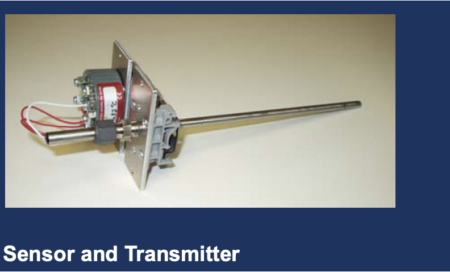Your Temperature Measurement Experts
Mini Case Studies from the Field
DIN Mounted Transmitter and Temperature Sensor
 Application
Application
HVAC temperature sensors manufactured for low cost translate to low reliability and low performance at one pharmaceutical company.
Often times HVAC systems are considered part of plant overhead costs and not as a direct operational expense. As a result, the instrumentation that is specified is typically the lowest cost products available. It is only after the plant is in operation and the processes within are running that the effects of the operating environment are seen.
A pharmaceutical company in California determined that room air temperature is critical to their product quality. The sensors measuring air temperature in their ducts were very low accuracy and susceptible to failure. They determined that they needed a more robust system.
Challenge
Replace existing sensors and transmitters with high performance products while keeping installation and maintenance as simple as possible.
Traditionally, duct mounted sensors are mounted with a flange that needs to be bolted into place. However, since the duct was already in place, mounting a flange was difficult. Furthermore, an electrical enclosure was already mounted to the duct and the instrumentation wiring was already in place. All that was really needed is a way to easily mount the sensor and transmitter in the existing enclosure.
Transmitters are commonly mounted using a DIN rail. Once the DIN rail is in place, the transmitter can be snapped into position and the wiring can be attached. However, there was not a straightforward way to mount the sensor probe. The wall thickness of the duct was too thin to thread in a compression fitting.
Solution
DIN rail mounted transmitter and temperature sensor.
A DIN rail adapter plate was engineered to accept a compression fitting. The sensor could then be inserted into the adapter plate through the compression fitting and snapped into place on the DIN rail. This made installation and removal a quick and easy process.
By retrofitting the instrumentation for room air temperature control, the customer now has increased product quality, reduced downtime due to environmental system failure and increased the efficiency of calibration verification through ease of use.
